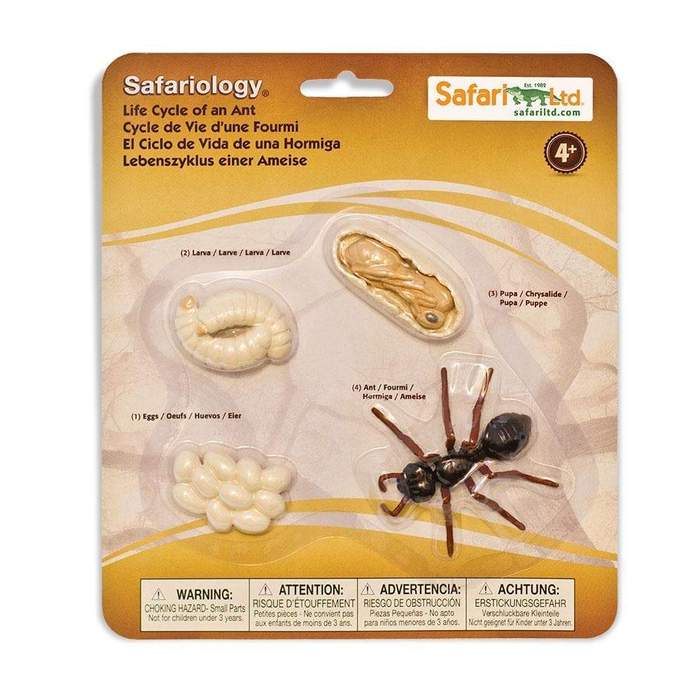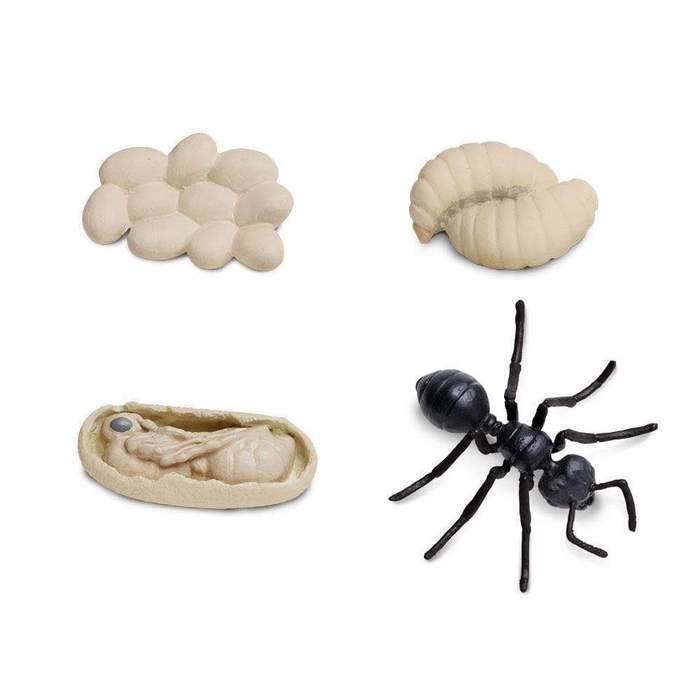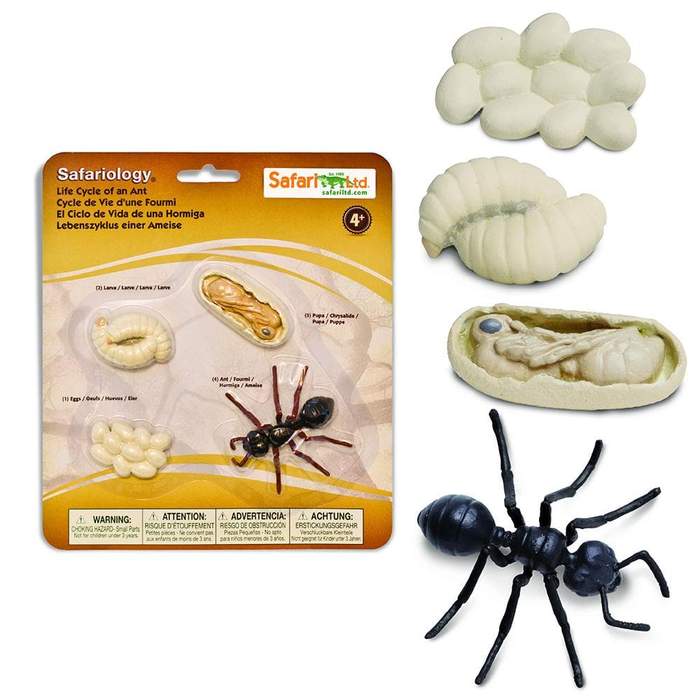1
/
of
3
Zoologishoppen
Life Cycle of an Ant Safariology®
Life Cycle of an Ant Safariology®
Regular price
149 SEK
Regular price
Sale price
149 SEK
Unit price
/
per
Taxes included.
Couldn't load pickup availability
This set includes the tiny white eggs were ants get their start. Larvae come next, molting several times before entering a period of rest and growth as pupae. The adult ant that emerges is darker in color, but will not grow larger because of its exoskeleton.
Description
History
Ants have been discovered trapped in amber dating to 95 million years ago, during the Cretaceous period. That they outlived the dinosaurs isn’t surprising, but today their biomass (combined weight of all ants in the world) would be greater than any other creature. Their colonies are strictly organized, with the queen choosing whether her eggs are male or female. Females will become workers or other queens, while males will become drones. Only queens and drones have wings.
Scientific Name: Formica
Characteristics:
Ants live in large colonies led by a queen, whose only job is to lay eggs. Worker ants do the heavy lifting, retrieving food and expanding the colony, while drones exist only to mate with the queen.
Size and Color:
The early stages of an ant’s life cycle aren’t very colorful, as most of their energy is devoted to eating. But adult ants have distinct coloration depending on the species. This adult ant is 2 ¾ inches long.
The Life Cycle of an Ant is part of the Safariology® collection.
All of our products are Non-toxic and BPA free.
Recommended Age: 4+
Size in cm: 2.41 L x 19.5 W x 23 H
This model is from 2014
Product Number: 663916
Description
History
Ants have been discovered trapped in amber dating to 95 million years ago, during the Cretaceous period. That they outlived the dinosaurs isn’t surprising, but today their biomass (combined weight of all ants in the world) would be greater than any other creature. Their colonies are strictly organized, with the queen choosing whether her eggs are male or female. Females will become workers or other queens, while males will become drones. Only queens and drones have wings.
Scientific Name: Formica
Characteristics:
Ants live in large colonies led by a queen, whose only job is to lay eggs. Worker ants do the heavy lifting, retrieving food and expanding the colony, while drones exist only to mate with the queen.
Size and Color:
The early stages of an ant’s life cycle aren’t very colorful, as most of their energy is devoted to eating. But adult ants have distinct coloration depending on the species. This adult ant is 2 ¾ inches long.
The Life Cycle of an Ant is part of the Safariology® collection.
All of our products are Non-toxic and BPA free.
Recommended Age: 4+
Size in cm: 2.41 L x 19.5 W x 23 H
This model is from 2014
Product Number: 663916
Share













